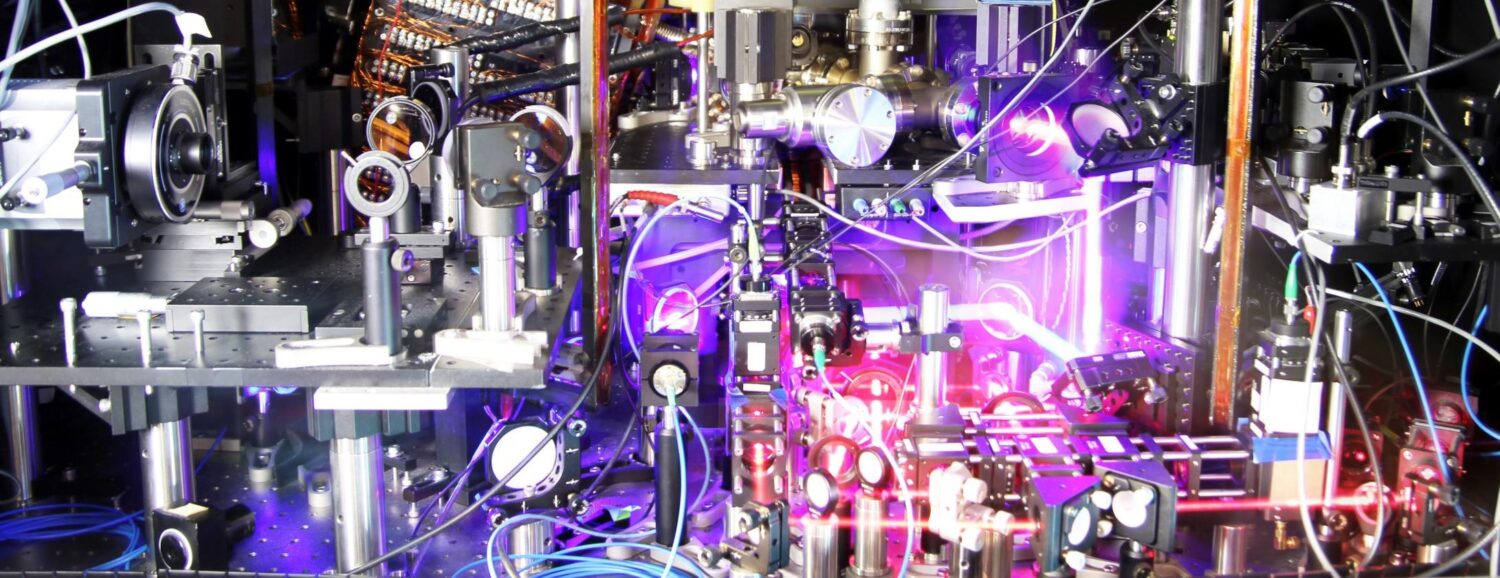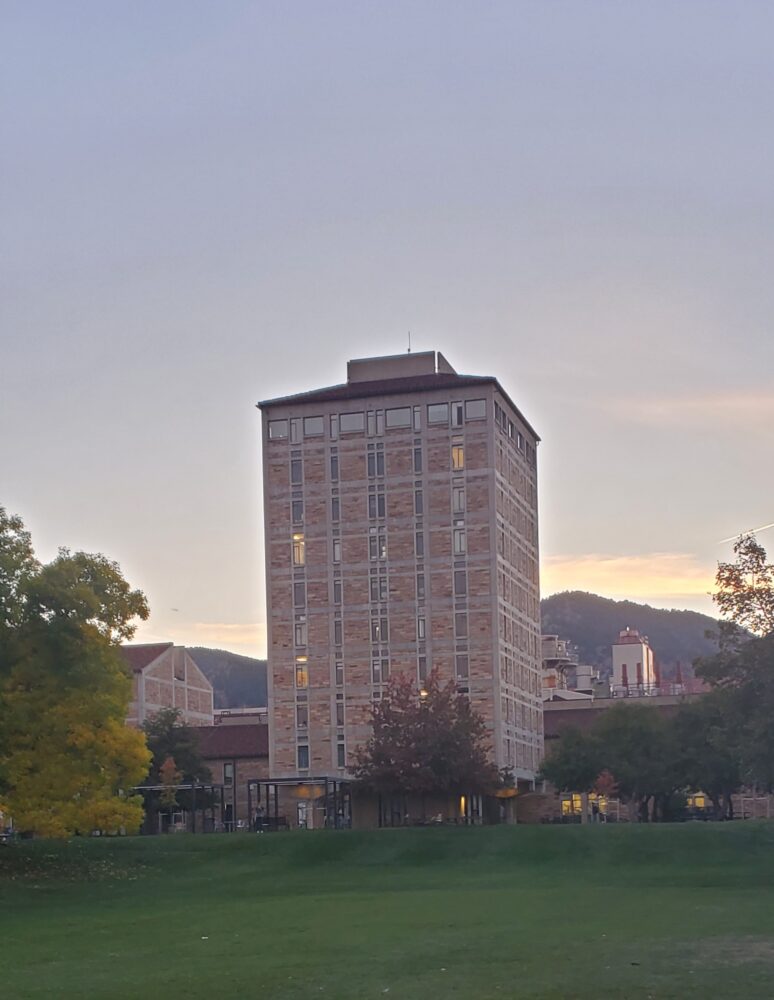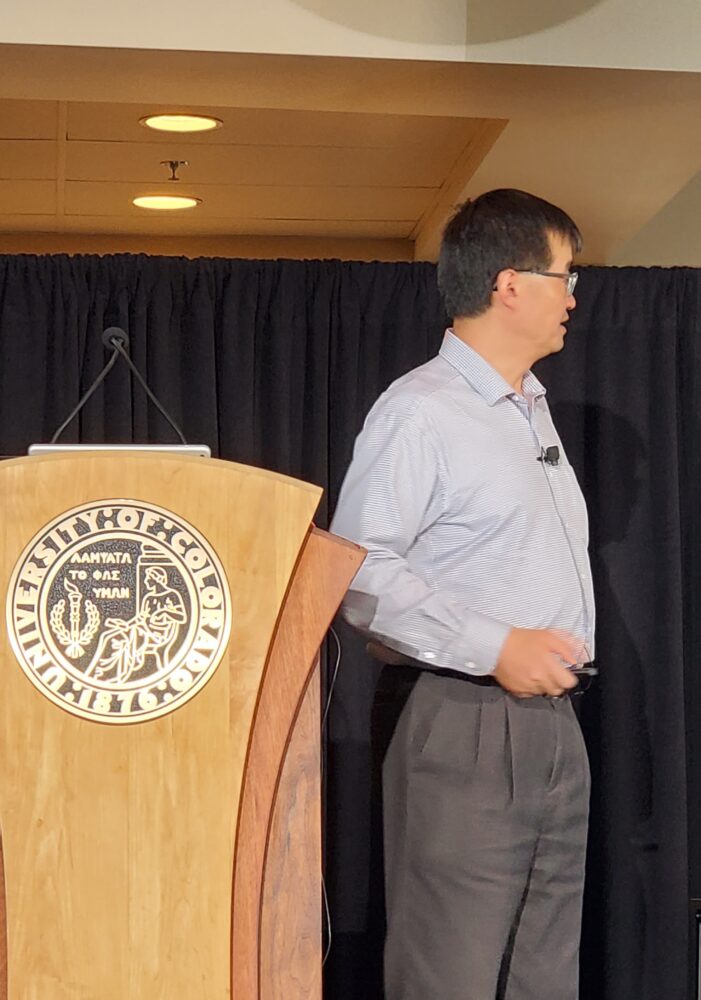
Beyond timekeeping: Atomic clocks can teach us more about the universe
The strontium clock at Ye Labs, JILA. Photo courtesy of JILA – Ye Labs
Quantum physicist Jun Ye built the most precise atomic clock on Earth—but it’s not good enough for him. His goal is to assemble one that is a thousand times more precise.
The record for the world’s most precise clock is held by the strontium clock that Ye’s group assembled three years ago. It is housed at JILA, a joint research institute of the University of Colorado Boulder and the National Institute of Standards and Technology, just a hundred meters from Folsom Field, where Ye presented his work to an audience of science writers Oct. 7. His talk was part of the Council for the Advancement of Science Writing’s New Horizons in Science briefings at the ScienceWriters2023 conference.
“The concept of time is now extremely soft,” said Ye, who is a professor and fellow at JILA. The slideshow behind him showed a picture of Albert Einstein superimposed on a demonstration of the theory of general relativity alongside a picture of artist Salvador Dali’s famous melting clocks. One consequence of Einstein’s theory of special relativity is time dilation—the slowing of time due to gravity and motion. The theory has been proven by scientists around the world many times over. Ye’s group has made progress toward measuring the effect at the millimeter scale.
Ye gestured toward the JILA building. There, the strontium clock measures time to a precision of 1019 cycles per second. This clock does not lose or gain a second in 100 billion years, a time longer than the age of the universe.

Why, then, do researchers seek more precise and more stable clocks? Such a clock, Ye said, would allow scientists to observe the effects of Einstein’s theory of general relativity at a microscopic scale for the first time. This technology would also provide geolocation so precise that movements of Earth’s subsurface, groundwater migration, and sea-level increases could be monitored with unprecedented precision.
Ye walked his audience through the development of the state-of-the-art atomic clock at JILA.
“Over the last 30 years, seven Nobel prize [winner’s work] in physics went into it,” he said. The first step, he said, is to cool down the strontium atoms. The cooling method, invented by Nobel Laureate Bill Phillips, uses a laser beam along with a magnetic field to trap and cool atoms from room temperature to near absolute zero in a matter of microseconds.
This cooled “ball” of atoms is then gently tossed upwards in a microwave cavity in a process called the “fountain” action, invented by Steven Chu, who also shared the 1997 Nobel Prize with Phillips. The fountain action results in a set of very slow-moving atoms, forming a state of matter called a Bose-Einstein condensate, another Nobel-winning discovery. Essentially, in this state the atoms are oscillating in place, like pendulums. The goal of the physicists is to have all the pendulums oscillate at the same rate, about 10 quadrillion times in a second, and then count the oscillations.
To build an even more precise clock, they need the atoms to oscillate a million times faster. This is why the next realization of the atomic clock needs to use optical frequencies. Now, however, the atoms need to be held in place as they oscillate. Another Nobel-winning technology called “optical tweezers,” invented by Arthur Ashkin of Bell Labs, provides the mechanism. Then an optical frequency comb, legacy of the Nobel-winning work of John Hall, provides an optical stroboscope to count the oscillations.

Ye reported that his group has been working to combine these subsystems at optical frequencies. He described the results of their latest experiment, now in press in the journal Nature Physics. In this experiment, an array of optical tweezers trapping thousands of strontium atoms is held in place in an optical lattice. When bombarded with a very stable laser, the atoms align and turn in their equatorial plane at the corresponding rate of 1019 oscillations per second.
Given enough time, about one minute in the case of strontium atoms, the cloud of atoms divides itself into two parts, each oscillating at a different frequency because of their different location in gravity. Modern spectroscopic techniques are used to take “photographs” of the atomic cloud. The experiment demonstrated that the two parts of the atomic cloud oscillated at slightly different frequencies due to gravitational slowing down of time at the distance of 100 microns—the width of a strand of human hair.
Ye said that he wants to measure gravitational time dilation at the scale of individual atoms. Among other applications, he said this will allow scientists to locate satellites that are thousands of miles away to within the dimensions of a bacterium. While floating thousands of miles from each other, the satellites could be synchronized to take pictures of the universe as if taken from antennas thousands of kilometers large.
Ye smiled as he responded to a question about applications. “If you want to go to Mars on your self-navigating spacecraft,” he said, “you’ll need these atomic clocks, because GPS will not be enough.”